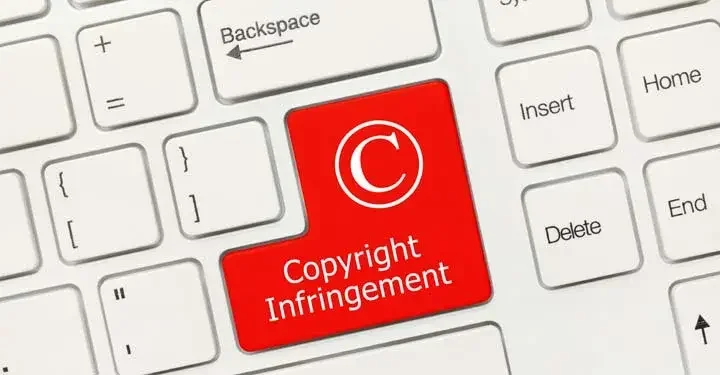In the 21st century, everyone is a publisher, author, artist, or creator of some sort—all thanks to the internet and other technological advances. Not only can anyone create but everyone also has access to these creations with just the click of a button, the launch of an app, or a quick search in a web browser. But with this easy access to content also comes some unwanted situations, such as discovering someone has copied or used your work without your permission.

Copyright infringement laws
A copyright is legal protection provided to creators of original works. As soon as a work is created, there is copyright protection, whether or not the work is ever published. Being the copyright owner allows you exclusive rights to recreate the work, copy it, publish it, perform it, and distribute it. If someone else engages in any of these acts without your permission, you may have a case for copyright infringement—but only if you have first registered your copyright.
When looking for copyright infringement, courts look to see if the exclusive rights of the copyright owner have been violated and whether the new work is substantially similar to the original work. Whether it was copied on purpose or by accident does not matter when determining copyright infringement, only whether you copied a substantial amount of an original work.
But sometimes copying an original work is intentional—and allowed. Creating a parody or using the work for educational purposes are both reasons the courts have upheld as valid under the fair use doctrine, which is an exception to copyright infringement.
Substantial similarity
When determining whether or not someone has committed copyright infringement, the courts use a test known as substantial similarity. However, deciding whether a work is substantially similar is neither clear-cut nor precise. There is no exact formula, but there are standards the court can use to reach a decision.
Looking at how much of a new work is similar to an original work can help a court decide whether the use is trivial or warrants further examination. If only one sentence from a 300-page book is copied, the court would most likely not find that use to be substantial. On the other hand, if one line of a four-line poem is used, there might be an argument that a significant amount of the original work was copied.
The second part of substantial similarity is the similarity element. The actual creative composition has to be similar, not just the idea. Ideas cannot be copyrighted, nor can facts, processes, ingredients, and other such information. A poem about spring flowers is an idea—and not a unique one at that. But the exact word choice, order, punctuation, and even sentence length are all unique creative aspects of the original work. So a court must compare the two works to see if the new one so closely resembles the original that it was likely copied. If the average person would confuse the new work with the original work, then there is a strong likelihood that a court would arrive at the same conclusion.
Fair use vs. substantial similarity
Fair use differs from substantial similarity because when you claim fair use, you are admitting that you intentionally and knowingly used a copyrighted work, but for a good reason. In this sense, fair use is a defense. The fair use doctrine allows someone to knowingly use part of an original work, without license or permission from the copyright owner, in particular circumstances—usually educational purposes.
Substantial similarity is not a defense at all but rather a test that courts use to determine whether or not an alleged new work actually copies another copyrighted work that was created first. If you are a defendant, you do not want a court to find substantial similarity between the works, otherwise you will be found to have committed infringement. If you are a plaintiff, on the other hand, you do want the court to find that there is substantial similarity, which would mean you have won your infringement case.
Copyright infringement is not an open-and-shut case. Although a finding of substantial similarity is crucial to proving that infringement has occurred, the process for determining this standard is quite subjective.

